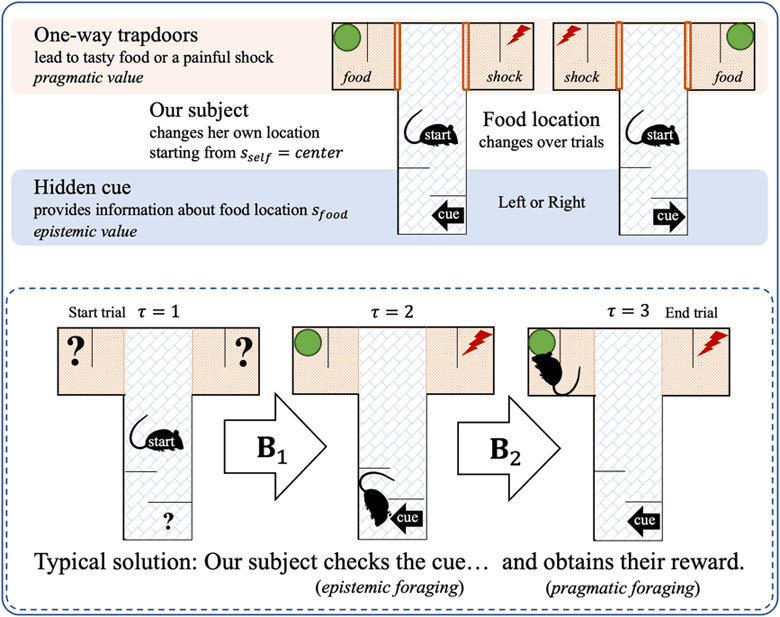Figure 4:

The setup of the T-maze task (top panel) and its typical solution (bottom panel). The synthetic agent (here, a rat) starts in the middle of the T-maze. If it moves up, it will encounter two one-way doors, left and right, which lead to either a rewarding food source or a painful shock (high versus low pragmatic value, respectively). If it moves downward, it will encounter an informative cue (high epistemic value) that indicates whether the food is in the left or right arm.
